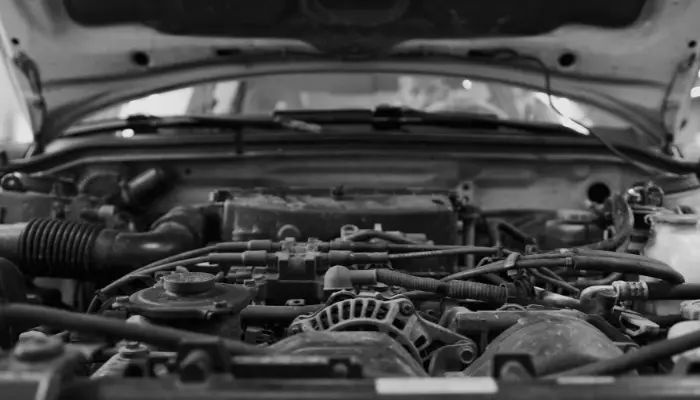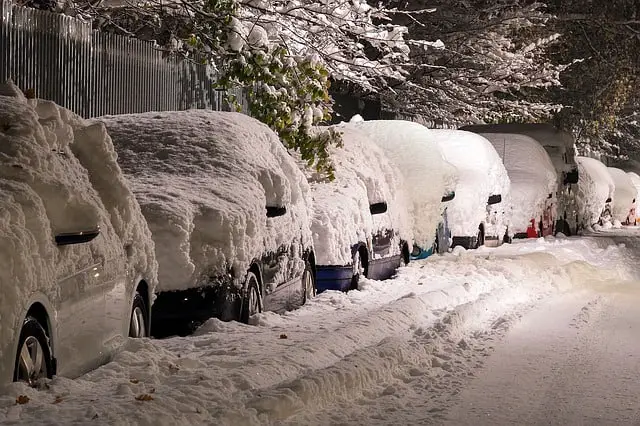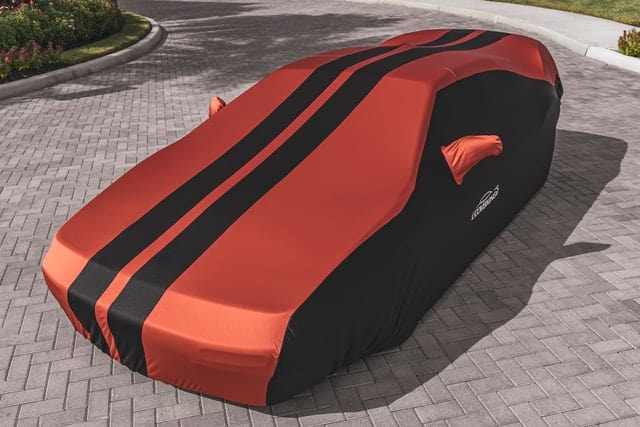- How to Clean Car Carpets Quickly (Without An Extractor) - July 10, 2024
- Can You Touch Up Clear Coat On A Car? Yes and No (Here’s Why) - November 25, 2023
- How To Wax A Car By Hand (For Beginners) - November 14, 2023
Last Updated on January 17, 2025 by Nate Schnell
From my time in the industry, I’ve rarely been fooled as badly as I have when trying to diagnose a bad purge valve. Unfortunately, this issue presents itself in many ways that all coincide with other potential issues – that all have to be tested for when you’re a technician, unfortunately educated guesses are frowned upon. So, that’s why I’m here. I’m here to help you identify the symptoms of a bad purge valve, understand why it’s happening, and then understand what happens if you continue driving with a bad purge valve. So keep reading and let’s get into it!
To fully understand the diagnostics procedures behind identifying problems with your vehicles, it’s required to understand all the components involved in the system. With that being said:
The purge valve is an essential component of your vehicle’s Evaporative Emissions Control System (EVAP). It plays a vital role in reducing harmful emissions and maintaining fuel efficiency by controlling the release of fuel vapors. These vapors are temporarily stored in a charcoal canister and then released into the engine for combustion. In this guide, we will cover the function, location, common issues, and maintenance tips for the purge valve.
What’s the Purpose of a Purge Valve?
The primary function of the purge valve is to regulate the flow of fuel vapors from the charcoal canister to the engine’s intake manifold. By allowing these vapors to be burned during combustion, the purge valve reduces emissions and helps optimize fuel efficiency. Additionally, it prevents the release of unburned fuel vapors into the atmosphere, ensuring compliance with environmental standards.
Where Is the Purge Valve Located?
The purge valve is typically located near the engine’s intake manifold. Its exact position can vary based on the make and model of the vehicle. For precise location information, consult your vehicle’s owner’s manual or seek assistance from a qualified mechanic.
How Does the Purge Valve Work?
The purge valve is an electrically-operated solenoid controlled by the vehicle’s engine control unit (ECU). When the engine is off, the valve remains closed to trap fuel vapors in the charcoal canister. Once the engine reaches its optimal operating temperature, the ECU sends a signal to open the valve. This controlled opening allows the fuel vapors to flow into the intake manifold, where they mix with air and are burned during the combustion process.
Signs of a Bad Purge Valve
A malfunctioning purge valve can lead to several issues. Common symptoms include:
- Check Engine Light: The ECU monitors the purge valve’s performance. If it detects abnormal flow, it triggers the check engine light and stores error codes such as P0441 or P0446.
- Poor Fuel Economy: A faulty valve can cause fuel vapors to escape into the atmosphere instead of being used, reducing overall fuel efficiency.
- Rough Idling or Hard Starts: If the valve is stuck open, it can create a vacuum leak, leading to an imbalanced air-fuel mixture and engine performance issues.
- Failed Emissions Test: A malfunctioning purge valve may result in excessive emissions, causing the vehicle to fail an emissions test.
- Raw Fuel Odor: A defective valve may allow fuel vapors to escape, creating a noticeable smell around the vehicle.
What Happens When a Purge Valve is Stuck Open or Closed?
Stuck Open
When a purge valve is stuck open, it allows excessive air into the engine, creating a lean air-fuel mixture. This can result in:
- Rough idling
- Misfiring
- Poor acceleration and engine performance
- Difficulty starting the vehicle
Stuck Closed
When the purge valve is stuck closed, it prevents fuel vapors from entering the engine. This can cause:
- Increased emissions
- Pressurized fuel tank
- Erratic fuel gauge readings
- Failed emissions tests
What Causes a Purge Valve to Fail?
Several factors can contribute to purge valve failure, including:
- Dirt and Debris: Accumulated dirt can clog the valve, preventing it from functioning properly.
- Electrical Issues: A damaged solenoid or wiring fault can prevent the valve from opening and closing as required.
- Wear and Tear: Over time, the purge valve’s components may degrade due to continuous use.
Can You Clean a Purge Valve?
In some cases, cleaning a purge valve can resolve minor issues, such as clogs or dirt buildup. Here’s how to clean a purge valve:
- Disconnect the Battery: To avoid electrical issues, disconnect the negative terminal of the battery.
- Remove the Valve: Carefully detach the purge valve from the EVAP system.
- Clean the Valve: Use a non-corrosive cleaner to remove dirt and debris. Avoid using harsh chemicals that could damage the valve.
- Dry Completely: Allow the valve to dry completely before reinstalling it.
- Reinstall the Valve: Reattach the valve to the system and reconnect the battery.
If the valve remains non-functional after cleaning, replacement may be necessary.
Should You Delete or Bypass a Purge Valve?
Bypassing or deleting a purge valve is not recommended. Doing so can:
- Increase Emissions: Without the purge valve, fuel vapors will escape into the atmosphere, contributing to pollution.
- Reduce Fuel Efficiency: The engine will lose the ability to utilize fuel vapors, leading to wasted fuel.
- Cause Engine Issues: The absence of a purge valve can result in imbalanced air-fuel ratios, affecting engine performance.
- Fail Emissions Tests: Vehicles without a functional purge valve are unlikely to pass emissions tests, potentially resulting in fines or other penalties.
How Can You Test a Purge Valve?
Testing a purge valve involves:
- Locate the Purge Valve: Typically near the engine intake manifold.
- Inspect the Valve: Check for visible damage or debris.
- Test Electrical Functionality: Use a multimeter to measure resistance (typically between 15-75 ohms).
- Apply Voltage: Test the valve’s operation by applying 12 volts to see if it opens and closes correctly.
- Check Vacuum Lines: Inspect for damage or leaks in connected lines.
Preventing Purge Valve Issues
To maintain a functional purge valve and EVAP system, follow these tips:
- Regular Maintenance: Schedule routine inspections to detect and address potential issues early.
- Replace Air Filters: A clean air filter minimizes dirt and debris that can reach the purge valve.
- Use High-Quality Fuel: Premium fuel reduces the risk of deposits forming in the system.
- Address Warning Lights Promptly: If the check engine light illuminates, have the vehicle inspected immediately to prevent further damage.
Conclusion
The purge valve is a crucial component for reducing emissions and maintaining fuel efficiency. Understanding its function and addressing issues promptly can prevent costly repairs and ensure your vehicle remains environmentally compliant. If you suspect a problem with your purge valve, consult a qualified mechanic to determine the best course of action.



